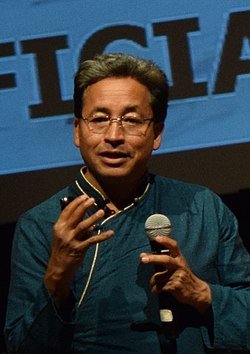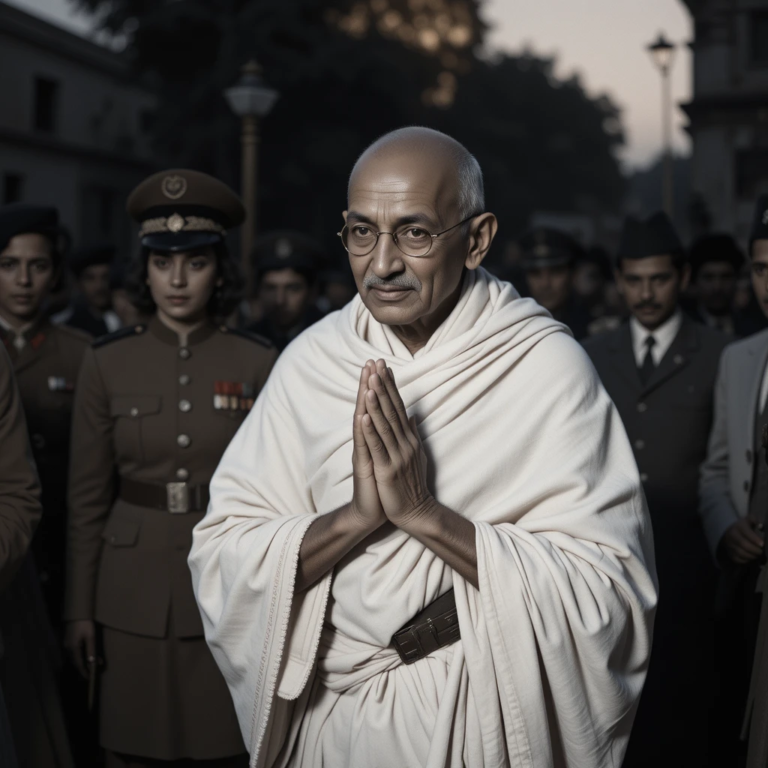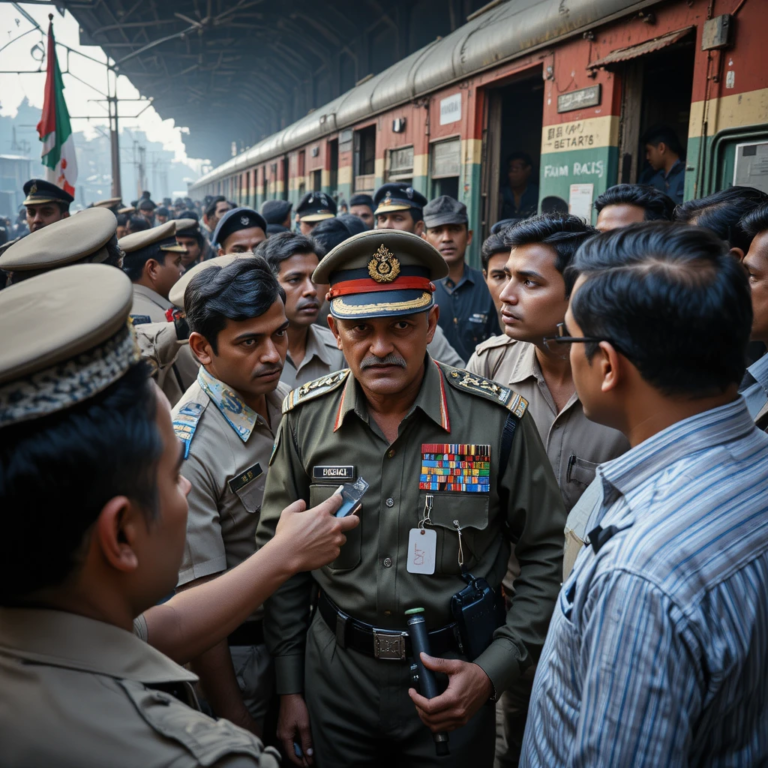The Revolutionary Thinker and His Writings
Introduction
Sardar Bhagat Singh (1907-1931), often described as the torchbearer of Indian revolutionary nationalism, was a complex blend of passion, intellect, and ideology. His commitment to India’s freedom struggle was fueled not just by a burning desire to see an end to British colonial rule but by his unwavering belief in social and economic equality. Unlike many of his contemporaries who viewed independence as a mere political goal, Bhagat Singh saw it as the starting point for a greater transformation—towards a society free from poverty, caste oppression, religious orthodoxy, and economic disparity. This expansive blog explores Bhagat Singh’s formative years, his revolutionary activities, his deep intellectualism, and the enduring legacy of his writings, particularly focusing on his jail diaries and seminal essays.
Table of Contents
Early Life and Influences
Sardar Bhagat Singh was born on September 28, 1907, in a politically active Sikh family in Banga, Punjab (present-day Pakistan). From a young age, he was exposed to nationalist fervor due to the influence of his father, Kishan Singh, and uncle, Ajit Singh, who were both freedom fighters. Growing up in this environment made political discussions a part of his daily life.

Childhood Impressions and the Jallianwala Bagh Massacre
In 1919, when Sardar Bhagat Singh was only 12 years old, the horrific Jallianwala Bagh massacre took place in Amritsar, where British troops, under the command of General Dyer, killed hundreds of unarmed Indians protesting against oppressive colonial laws. The massacre left a deep impression on young Bhagat Singh’s mind. He visited the site soon after, collecting soil soaked with the blood of martyrs and vowing to dedicate his life to India’s liberation. The event sparked a fierce determination in him to fight against British tyranny by any means necessary.
Academic Journey and Intellectual Growth
Sardar Bhagat Singh’s academic journey reflected his keen intellect and thirst for knowledge. He was an avid reader who devoured books on history, politics, and philosophy. While studying at Lahore’s National College, he came into contact with revolutionary literature and was deeply influenced by Marxist and socialist ideologies. European thinkers like Karl Marx, Friedrich Engels, and Vladimir Lenin shaped his worldview. He believed that freedom from colonial rule alone would not be sufficient; true independence would require economic equality and social justice.
Revolutionary Acts and Political Philosophy
Sardar Bhagat Singh’s political activities were rooted in his firm belief that only a radical overhaul of existing social and economic structures could guarantee true freedom for the masses. His revolutionary philosophy was shaped by Marxism, socialism, and anti-imperialism, and he played a central role in transforming the Hindustan Republican Association (HRA) into the Hindustan Socialist Republican Association (HSRA), emphasizing the socialist aspect of their struggle.
The Assassination of Saunders and Retaliation for Lala Lajpat Rai
One of Sardar Bhagat Singh’s earliest acts of defiance was the assassination of British police officer John Saunders on December 17, 1928. This was not an impulsive act of violence; it was a well-planned response to the brutal assault on Lala Lajpat Rai, a respected Indian leader who succumbed to injuries inflicted during a police lathi-charge on a peaceful protest. Sardar Bhagat Singh, along with Rajguru and Sukhdev, decided to avenge Lala Lajpat Rai’s death. Their aim was to challenge the oppressive British authorities and demonstrate that Indian youth would not tolerate such atrocities.
Despite being branded as a ‘terrorist’ by the colonial government, Sardar Bhagat Singh made it clear that their aim was not blind violence but rather a strategic attempt to shake the foundations of British power. For him, the act was symbolic—a clarion call for Indians to rise and demand justice. This incident turned him into a legend overnight, but his ultimate aim was to awaken the masses to the cause of independence and socialism.
The Assembly Bombing: ‘To Make the Deaf Hear’
The Central Legislative Assembly bombing on April 8, 1929, remains one of the most significant events of Bhagat Singh’s life. He, along with Batukeshwar Dutt, threw two non-lethal bombs into the Assembly while shouting slogans like “Inquilab Zindabad!” (Long Live the Revolution!). The bombs were deliberately designed to cause minimal harm, serving primarily as a demonstration against the repressive Public Safety Bill and Trade Disputes Bill. Bhagat Singh and Dutt surrendered themselves voluntarily, using their trial as a platform to propagate their political ideology.
Through his daring act, Sardar Bhagat Singh sought to “make the deaf hear,” emphasizing that the colonizers and even some Indian leaders had turned a deaf ear to the plight of the masses. The trial was widely covered in the press, and Bhagat Singh used every opportunity to spread his revolutionary message, exposing the exploitative nature of colonial rule and advocating for a socialist revolution to bring true freedom.
The Influence of Marxism and Socialism
Sardar Bhagat Singh’s revolutionary ideals were rooted in Marxism and socialism. He envisioned an India where every citizen had access to basic rights and opportunities, free from economic exploitation, caste-based discrimination, and communalism. His writings often highlighted the need for workers’ rights, land redistribution, and the end of capitalist domination. For him, the revolution was not merely about political freedom but about creating a society founded on equality, justice, and secularism.
Writings and Intellectual Contributions
Why I Am an Atheist: Rationalism and Humanism
Among Sardar Bhagat Singh’s most profound works is his essay Why I Am an Atheist. Written in response to criticism from religious figures who claimed that his political ideology and radical actions reflected a lack of faith, this essay is a deep reflection on his beliefs. Bhagat Singh explains how he transitioned from a believer in God during his childhood to a rationalist and atheist as he matured.
In the essay, Sardar Bhagat Singh rejects the idea that divine intervention could bring about social change. He argues that only human action, fueled by rational thought and collective effort, can drive true progress. His criticism of blind faith and religious orthodoxy stemmed from his observation that these forces often perpetuated social inequalities and kept people subjugated. By challenging religious dogma, he sought to free people from mental slavery and encourage them to take control of their destinies.
Sardar Bhagat Singh’s atheism was not a rejection of spirituality but a rejection of the idea that change could be achieved through passive devotion. He emphasized the need for critical thinking, scientific temper, and social activism. His atheism was rooted in compassion and his desire to see an end to human suffering. He believed that true revolutionaries must have an unwavering commitment to their ideals, regardless of whether they believed in a higher power.

Excerpt and Analysis of ‘Why I Am an Atheist’
“Any man who stands for progress has to criticize, disbelieve, and challenge every item of the old faith. Item by item he has to reason out every nook and corner of the prevailing faith.”
In this passage, Sardar Bhagat Singh underlines the importance of questioning established beliefs and practices. For him, a true revolutionary is one who dares to challenge the status quo and seek out new paths for progress. This emphasis on reason, critical inquiry, and self-doubt reflects the intellectual depth of his thought.
Sardar Bhagat Singh’s atheism was also closely tied to his critique of religious exploitation and communalism. He witnessed how religion was often used by both colonial and indigenous elites to divide and control people. By declaring himself an atheist, he sought to transcend the religious divisions that had plagued Indian society and promote a more unified struggle for social and economic justice.
Jail Diary and Letters: Reflections from Prison
During his imprisonment, Sardar Bhagat Singh maintained a diary in which he recorded his thoughts, reflections, and excerpts from books and political literature he was reading. These writings provide a window into his philosophical and emotional journey. Far from being broken by incarceration, Bhagat Singh used this time to deepen his ideological understanding and strengthen his resolve.
Key Themes in Bhagat Singh’s Jail Diary
- Philosophy of Martyrdom: Sardar Bhagat Singh wrote extensively about the meaning of martyrdom and the role of sacrifice in the struggle for independence. He viewed his death not as a defeat but as a spark that would ignite the flame of revolution across the nation. His letters reflect his understanding that every sacrifice made for the cause of freedom would ultimately bear fruit.
- Critique of Capitalism and Imperialism: Sardar Bhagat Singh’s jail writings often contain critiques of capitalism and imperialism, which he saw as two sides of the same coin. He argued that true liberation would be impossible without dismantling the economic structures that perpetuated exploitation and inequality.
- Love for Humanity: Despite being labeled as a ‘terrorist’ by the British authorities, Bhagat Singh’s jail writings reveal a deep love for humanity. He was motivated not by hatred for the British, but by love for the Indian masses who suffered under colonial rule. This compassion extended to his vision of a just society, free from discrimination and oppression.
Letters from Jail
Sardar Bhagat Singh wrote several letters to his family, friends, and political comrades from jail. These letters reveal his human side, showing him as a son, a friend, and a comrade who cared deeply for those around him. His letters to his parents often contained words of reassurance, urging them to be strong and proud of his sacrifice for the nation.
One of his most famous letters was addressed to his fellow comrades in which he expressed his belief that revolutionaries should work not for personal glory but for the greater good of society. He often emphasized that true revolutionaries must remain humble and dedicated to their cause, regardless of the rewards or recognition
Bhagat Singh’s Last Days and Execution
The final days of Bhagat Singh were filled with intense political and emotional turmoil. Despite his young age, Sardar Bhagat Singh had become a national figure, a symbol of resistance to British colonialism and the oppressive conditions faced by the Indian masses. However, his journey was cut short on March 23, 1931, when he, along with Rajguru and Sukhdev, was executed by the British government. His execution sparked widespread protests across India, and his martyrdom turned him into a folk hero whose name would be synonymous with the fight for independence.
The Trial and Injustice
Sardar Bhagat Singh’s trial was a political farce from the start. The British colonial government, unable to silence his revolutionary ideals, sought to make an example of him by subjecting him to a trial that lacked any semblance of fairness. Bhagat Singh and his associates were charged with conspiracy to murder John Saunders, and the entire trial was characterized by British attempts to portray them as terrorists.
Despite this, Sardar Bhagat Singh used the trial to advocate for his ideals. During the proceedings, he and his co-accused remained defiant and unapologetic. He saw the trial as yet another stage for the revolutionary movement and continued to speak out against the colonial system, all the while remaining committed to his vision of a free and just India.
Even as his execution loomed closer, Sardar Bhagat Singh remained calm and resolute. His words to his fellow prisoners and his letters to his family displayed a sense of inner peace that came from his unshakeable belief in his cause. Bhagat Singh understood the significance of his sacrifice and was fully aware of the indelible mark he would leave on history. His final act of defiance—the refusal to appeal for clemency and his declaration that his death would inspire more revolutionaries—became a statement of unwavering commitment to the cause of freedom.
The Execution: March 23, 1931
Sardar Bhagat Singh, Rajguru, and Sukhdev were hanged at the Central Jail in Lahore on the night of March 23, 1931, despite widespread protests and calls for clemency. The manner of their execution was done under circumstances that further fueled public outrage. The execution took place hours before the scheduled time to prevent a public outcry, and the bodies were cremated hastily to prevent any demonstrations. However, these attempts to suppress the revolutionary spirit only intensified the resolve of the Indian population, further solidifying Bhagat Singh’s place in history.
The martyrdom of Sardar Bhagat Singh became a turning point in the Indian freedom struggle. His death awakened the Indian masses, instilling in them a new sense of urgency and commitment to the cause of independence. It marked the beginning of a new phase in the nationalist movement, where revolutionary ideas gained increasing support, particularly among the youth. His execution, while tragic, became a rallying cry for millions of Indians, propelling the struggle for independence forward.
Bhagat Singh’s Relevance in Contemporary India
Though more than nine decades have passed since Sardar Bhagat Singh’s execution, his life, his writings, and his legacy continue to hold profound relevance in contemporary India. His thoughts on atheism, his vision for a socialist India, and his commitment to justice resonate strongly in today’s socio-political landscape.
Bhagat Singh as a Visionary: Beyond Political Independence
While Sardar Bhagat Singh is primarily remembered for his role in the freedom struggle, his thoughts on a post-independence India were equally important. He understood that political freedom alone would not guarantee the well-being of the common man. Sardar Bhagat Singh was deeply influenced by the socialist ideals of equality, workers’ rights, and the abolition of class distinctions. His writings often reflected a deep concern for social justice, and he believed that the ultimate goal of independence was to eradicate poverty, oppression, and exploitation in all forms.
His commitment to social justice can be seen in his critique of the capitalist system, which he argued was a major cause of inequality. Sardar Bhagat Singh advocated for a system that would prioritize the welfare of the masses over the interests of the elite, urging that India’s economic and social systems be restructured in a way that would benefit the working class.
This vision of a just and egalitarian society, free from exploitation and social inequality, is one of Sardar Bhagat Singh’s lasting contributions. His belief that “the goal of revolution is not merely to throw off the yoke of foreign rulers but to establish a new system of justice and equality” continues to inspire movements for social change in India and across the world.
Bhagat Singh and the Youth of India
Perhaps one of the most enduring aspects of Sardar Bhagat Singh’s legacy is his appeal to the youth of India. He remains a symbol of youthful rebellion, courage, and intellectual rigor. His writings and actions continue to inspire young people to stand up for their rights, question authority, and demand a better future.
In his lifetime, Sardar Bhagat Singh managed to tap into the dissatisfaction and disillusionment of the youth, encouraging them to take part in revolutionary activities. His call to action was clear: the youth must be the harbingers of change. His commitment to education, critical thinking, and self-awareness was evident in his life, and he remains an enduring figure for young revolutionaries who believe in the power of ideas and collective action.
Bhagat Singh’s Legacy in Indian Politics
Sardar Bhagat Singh’s ideas about socialism, secularism, and anti-imperialism still hold a place in the political discourse in India. While the political landscape of India has changed significantly since his time, the issues Sardar Bhagat Singh fought for—poverty, inequality, communalism, and exploitation—remain central concerns in contemporary politics.
His legacy continues to inspire politicians, activists, and intellectuals who strive for a more just society. Whether it is in the context of youth activism, political reform, or the fight for social justice, Sardar Bhagat Singh’s ideas remain relevant and continue to provide a moral and intellectual framework for those seeking to create a better India.
Conclusion
Sardar Bhagat Singh’s life and writings present an inspiring story of intellectual rigor, revolutionary action, and an undying commitment to justice. He was not just a martyr but a visionary whose writings laid the foundation for the political, social, and intellectual transformations that followed in the post-independence period. His critique of colonialism, capitalism, and religion, his advocacy for socialism and secularism, and his unwavering belief in the power of the youth to bring about change continue to inspire individuals and movements worldwide.
Sardar Bhagat Singh’s final words, “They may kill me, but they cannot kill my ideas,” ring true to this day. His thoughts on revolution, justice, and human rights remain as relevant today as they were in the early 20th century. In the struggle for a better world, Sardar Bhagat Singh stands as a beacon of hope, reminding us that the fight for equality, freedom, and justice is ongoing, and that our actions today shape the future of humanity.
His writings, especially his thoughts on atheism and his jail diaries, offer a profound and timeless reflection on the human condition, encouraging us to think critically, challenge oppressive systems, and work towards a world that is free from exploitation and injustice. Bhagat Singh’s life and legacy continue to resonate not just in India but across the globe, inspiring all those who seek a world based on reason, equality, and freedom.
References
Singh, Bhagat. The Jail Notebook and Other Writings. Oxford University Press, 2007.
This collection of Bhagat Singh’s writings, including his personal diary and letters, offers a glimpse into his intellectual development and revolutionary ideals. It serves as a key primary source for understanding his views on atheism, socialism, and justice.
Kapur, Harish. Bhagat Singh: The Martyr Who Inspired a Revolution. Rupa & Co., 2015.
This biography provides an in-depth analysis of Bhagat Singh’s life, his revolutionary activities, and his writings. It also explores his lasting impact on India’s freedom struggle.
Sikh, Daljit Singh. Bhagat Singh: A Revolutionary Hero. The Sikh Review, 2001.
This journal article discusses Bhagat Singh’s revolutionary thought and his role as a hero in the struggle for Indian independence. It highlights his stance on social justice and secularism.
Bose, Subhas Chandra. The Indian Struggle, 1920-1942. Asia Publishing House, 1963.
Although focused primarily on Subhas Chandra Bose, this book offers insights into the broader context of the Indian independence movement and references Bhagat Singh’s role in the revolution against British imperialism.
Chandra, Bipan. India’s Struggle for Independence. Penguin Books, 1989.
A comprehensive account of India’s fight for independence, this book discusses the contributions of various revolutionaries, including Bhagat Singh, and the significance of their ideologies in the broader nationalist movement.
Nayar, Kuldip. Bhagat Singh: A Portrait. Vikas Publishing House, 1987.
A detailed biography of Bhagat Singh that delves into his thoughts, his revolutionary activities, and the philosophical foundation of his struggle.
Prakash, Om. The Politics of Modern India Since Independence. Pearson Education, 2002.
This book traces the evolution of India’s political landscape after independence, with references to the ideologies of leaders like Bhagat Singh who had a profound impact on shaping the nation’s path forward.
Sikand, Yoginder. The Rise of Jihad in Kashmir. Oxford University Press, 2000.
While this work primarily focuses on Kashmir, it also draws on the influence of nationalist ideas propagated by revolutionaries like Bhagat Singh, whose writings and revolutionary activities had long-lasting effects on the political landscape of the Indian subcontinent.
“The Sacrifice of Bhagat Singh,” The Tribune, 24 March 1931.
This newspaper report, published immediately after Bhagat Singh’s execution, provides details about his martyrdom, the public reaction, and the political climate surrounding his death. It remains a historical document that reflects the outrage and grief of the Indian populace.
“Bhagat Singh’s Atheism and Revolutionary Thought,” The Times of India, 18 March 2001.
A special report that delves into Bhagat Singh’s views on atheism, his critique of religion, and the intellectual framework behind his revolutionary ideas. The article connects his atheism to his broader fight for social justice and equality.
Gandhi, M.K. Hind Swaraj and Other Writings. Cambridge University Press, 1997.
Although Mahatma Gandhi’s philosophy often conflicted with Bhagat Singh’s revolutionary ideas, this work provides a counterpoint to Singh’s beliefs and helps contextualize the ideological divide between Gandhi and Singh during India’s struggle for independence.
Basu, A.K. Revolutionary Movement in India, 1905-1947. Oxford University Press, 2007.
This book offers an academic perspective on the revolutionary movement in India, providing context for Bhagat Singh’s actions, his theoretical contributions to the independence movement, and his lasting influence on subsequent generations of political thinkers.
Dutt, R.C. India Today: A Documentary History. HarperCollins Publishers, 1988.
Dutt’s work traces the social, political, and economic conditions that gave rise to the revolutionary movements in India, providing insights into Bhagat Singh’s role within the broader context of India’s struggle for independence.
“Revolutionary Heroes of India,” The Hindu, 23 March 2005.
A commemorative article published by The Hindu on the anniversary of Bhagat Singh’s execution. It reflects on his lasting influence on India’s political thought and his importance as a symbol of resistance against colonialism.
Kapur, K.K. Bhagat Singh and the Youth Movement in India. Asia Publishing House, 1989.
This book focuses on Bhagat Singh’s impact on the youth movement in India, exploring how his revolutionary ideas inspired the younger generation to engage in active resistance against British rule.
“Bhagat Singh: Icon of Revolution,” The Indian Express, 23 March 2010.
An article analyzing the enduring legacy of Bhagat Singh, discussing his ideological contributions, his atheism, and his vision of a free and just India. It examines how Bhagat Singh’s ideas continue to resonate in contemporary Indian politics and society.
Parel, Anthony. Gandhi and the Modern World. Cambridge University Press, 2009.
This work provides a comparative study of Gandhi’s philosophy and the revolutionary ideas of figures like Bhagat Singh, analyzing the ideological conflict between nonviolence and armed resistance in the Indian independence struggle.
Bhagat Singh’s Writings on Atheism and Revolution, The People’s Review, 10 April 1930.
A detailed analysis of Bhagat Singh’s atheism, discussing how his beliefs were central to his revolutionary philosophy and how they were intertwined with his fight for social justice.
Fry, Stephen. The History of Atheism. Oxford University Press, 2019.
This academic work explores the history of atheism, and while it does not directly focus on Bhagat Singh, it provides important context for understanding his atheism in relation to the intellectual movements of the time.
“Bhagat Singh: Revolutionary Hero,” The Economic and Political Weekly, 12 November 1995.
This journal article provides a historical and political analysis of Bhagat Singh’s role in the independence movement, exploring his revolutionary ideas and their influence on future political movements in India.



